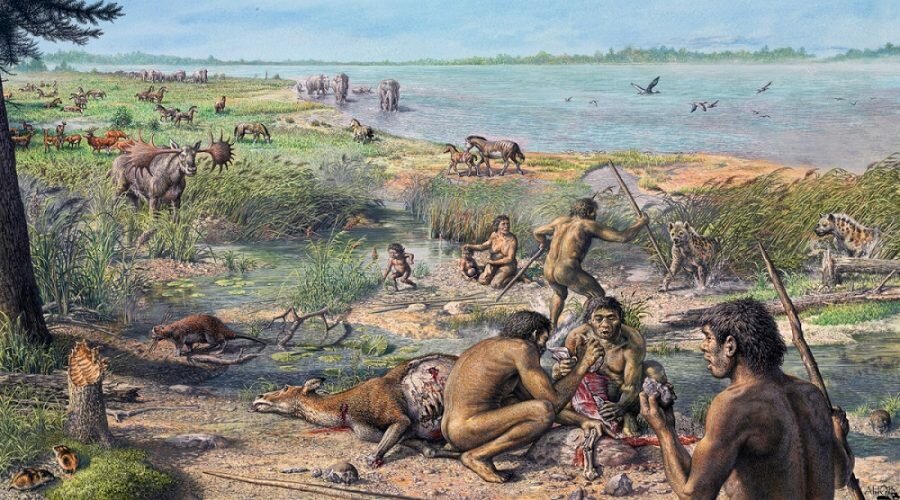Using the longest climate simulation model, the authors of this paper propose that the speciation events of Homo were influenced by changes in temperature and precipitation.
They were able to do this because they linked the climate data to data on human fossils and artifacts over the last 2 million years.
Next, they created habitat suitability models and were able to map where ancient humans settled and overlapped. The following video demonstrates their study and results:
Three conclusions were made:
- Milankovitch or astronomical shifts in the orbit and axis of Earth resulted in dramatic changes in early human ecosystems. Things like rainfall, temperature, and vegetation changed because of these shifts and these changes lead to where and when humans migrated and diverged or converged from one another.
- The transition between Homo species, such as H. heidelbergensis to H. sapiens correlated with massive climate shifts.
- Lastly, approximately 300,000 years ago H. sapiens likely evolved from H. heidelbergensis in southern Africa. This conclusion was made because there was climate stress resulted in a decline in suitable habitats. This evolutionary strain lead to the decline of H. heidelbergensis in Africa and to the rise of H. sapiens. H. sapiens were ultimately able to adapt to a drier habitat better than their predecssors.
There are limitations to this study; for starters what they call suitable habitats is very subjective and when based upon Earth’s orbital variations are highly subject to conjuncture.
Furthermore, how to model ecosystems is highly complex. We currently do not have the granularity to identify microclimates. The science of modeling paleoclimates is burgeoning and is fraught with interpretation.
Another highly controversial debate in the world of paleoanthropology is whether or not humans originated from a single region or from multiple regions within Africa. It is clear that the authors of this current paper suggest the single region debate.
The genetic evidence currently supports this theory but is in stark contrast with some paleoanthropological remains. Further work is needed to use ancient and modern DNA as another line of evidence to see if, in fact, climate change played a role in the diversification of humans.
Sources:
Timmermann, A., Yun, KS., Raia, P. et al. Climate effects on archaic human habitats and species successions. Nature (2022). https://doi.org/10.1038/s410-9

